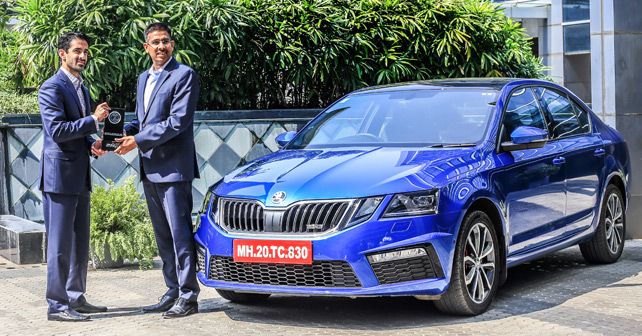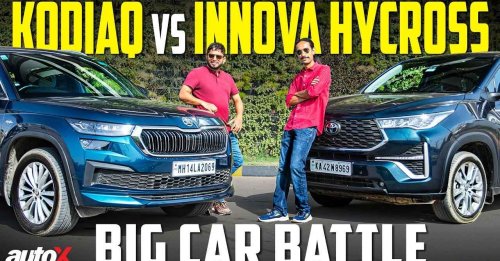
Skoda Octavia RS
How has this year been for Skoda?
Actually, very exciting! In the first 10 months, we’ve grown 30%. We’re heading towards anywhere between 17,200 to 17,500 units for the year, which would be a growth of 32 to 34%. So, one from a growth perspective, and also from new products perspective, this is one of our best years in the last 3 to 4 years.
Have you been surprised with the RS, and the kind of response it’s got?
We planned 150 cars, which got sold out in 15 days – which was a pleasant surprise. At the same time, I thought we could have done better with our estimation. I think on two counts the car has done wonderfully well. First, it’s a real RS. The engine is RS-spec and the driving dynamics are such that you can drive it to office also. It doesn’t have to be a second car that you only take out on weekends. Initially we thought only enthusiasts would buy it, but I think people are finding that it’s as good a car to drive to work too.
When will your next batch of cars be available?
We’re taking orders for February-March. We’re getting it in batches of 50 cars a month, and then hopefully from thereon more will continue.
And how’s the Kodiaq doing?
The Kodiaq has been good too. We have close to a thousand orders right now, which takes us through the end of this year’s production. I personally think we should be able to have a healthy order bank for 2 to 3 months for this car. It’s positioned very well, as we have only one variant right now. This is also being appreciated by customers, because they expect fully loaded variants from Skoda. This has been happening with the Octavia and the Superb too. We’ve transferred the learning by bringing in the fully loaded version, and as we go down the lifecycle we can try to get some more variants.
What’s the Kodiaq’s main competition? What are people choosing the Kodiaq instead of?
We see migration from two areas. One is the Toyota Fortuner and the Ford Endeavour customers – those who have a lot of city usage. I think they find much better refinement here. And, second, we see some migration from smaller luxury cars in the same price range. The customers feel they can have a much bigger car, which is even better equipped, with the Kodiaq.
Based on how well SUVs are doing, when is the Karoq expected?
We’re working very hard on getting the Karoq, and I have to say that so far the preparation is favourable. It isn’t confirmed as yet, but the Karoq is our next target for India. I can’t comment on the timing right now. 2018 would be ideal, but at the moment I really don’t have a timeline to give you.
How does all this talk of electrification affect your future plans?
Skoda is a global player, and it’s part of the VW group. It has a global strategy in terms of electric vehicles. At the Shanghai Motor Show at beginning of this year, we showed the first electric concept vehicle, the Vision E. We’ve already announced that we’ll get our first electric car in 2019. From a technology point of view, Skoda will be there but the question is how soon will the market be prepared in terms of infrastructure, taxation, government policy and also a customer perspective. Electric vehicles also need a slightly different mind-set from customers. We’re watching it quite closely, and since we have a long-term plan for India it is very much part of the goal.
Are you already seeing any difference in the product mix in terms of diesel and petrol, considering all the negative sentiment surrounding diesels in the past few months?
Definitely, I think the mix has changed from 60% diesel and 40% petrol to the other way around. This has happened over the last three years, or maybe a bit more than that. It’s also dependant on the vehicle category. So, sedans are getting more in terms of petrol penetration but SUVs are still quite high with diesel penetration. People prefer the torque of a diesel, and also from a usability point of view SUV customers drive longer distances and they tend to see the benefit on mileage. But the shift is definite. But I want to underline the fact that diesel technology, at least as far as new vehicles are concerned, is far superior today than at any time in the past. To put the blame on diesel as a polluter is more emotion driven than fact driven. Some of today’s diesel engines are cleaner than petrol motors, and that’s where we need some clear information to educate customers. We should not change our engine choice just based on emotions, as it will not help the environment.






















Write your Comment